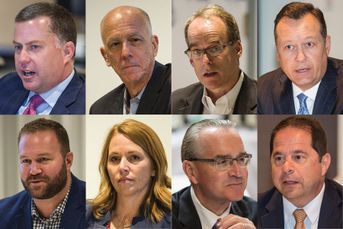DOL fiduciary rule may finally spark lower fund fees for mutual funds
The industry may have held on to many distorted fee structures that might have been better suited for the 1980s.
One might assume that the asset management industry wouldn’t need something as momentous as the Department of Labor’s fiduciary rule to start seeing the light on fees. But that appears to be the case.
Or, at least, we hope it will be the case.
As reported in InvestmentNews last week, lower fees and fewer mutual fund share classes are expected to be among the indirect by-products of the new fiduciary rule.
We are filing that under: It’s about time.
While we wouldn’t begrudge any legitimate enterprise a profit margin, the mutual fund industry seems to have held on for too long to many of the distorted fee structures that might have been better suited to a 1980s-era financial services operation.
Right now, the average expense ratio for U.S. equity open-end mutual funds is 1.206%.
ALPHABET SOUP
The share-class alphabet soup is where the fund industry gets most creative, with some funds expanding to as many as 14 share classes.
As might be expected, institutional shares are the least expensive, at an average 0.907%, while C-shares are the most expensive, averaging 1.971%, or more than double the cost of institutional shares.
B-shares are only slightly cheaper, at an average 1.755%, and A-shares average 1.242%.
In some respects, it is mind-boggling that the fund industry continues to reap such fees, and the financial advice industry has participated in keeping fees afloat by placing investors in high-cost products.
(Related read: The DOL fiduciary rule will forever change financial advice, and the industry has to adapt)
But the momentum and the pressure toward lower fees are undeniable. Change is in the air, if not yet in the prospectuses.
Just look at the traction achieved by exchange-traded funds, which represent a stark contrast to traditional mutual funds in many ways, but especially with regard to fees.
According to Morningstar Inc., U.S. open-end mutual funds have experienced nearly $9 billion in net outflows this year, which comes on the heels of $35.1 billion in net outflows last year.
ETFs, meanwhile, have seen $141 billion in net inflows this year, following two consecutive years of more than $240 billion in net inflows.
This isn’t to suggest the mutual fund industry has completely ignored the pressure on fees, but hopefully the DOL rule can help it do a better job of meeting the new demand.
Learn more about reprints and licensing for this article.








